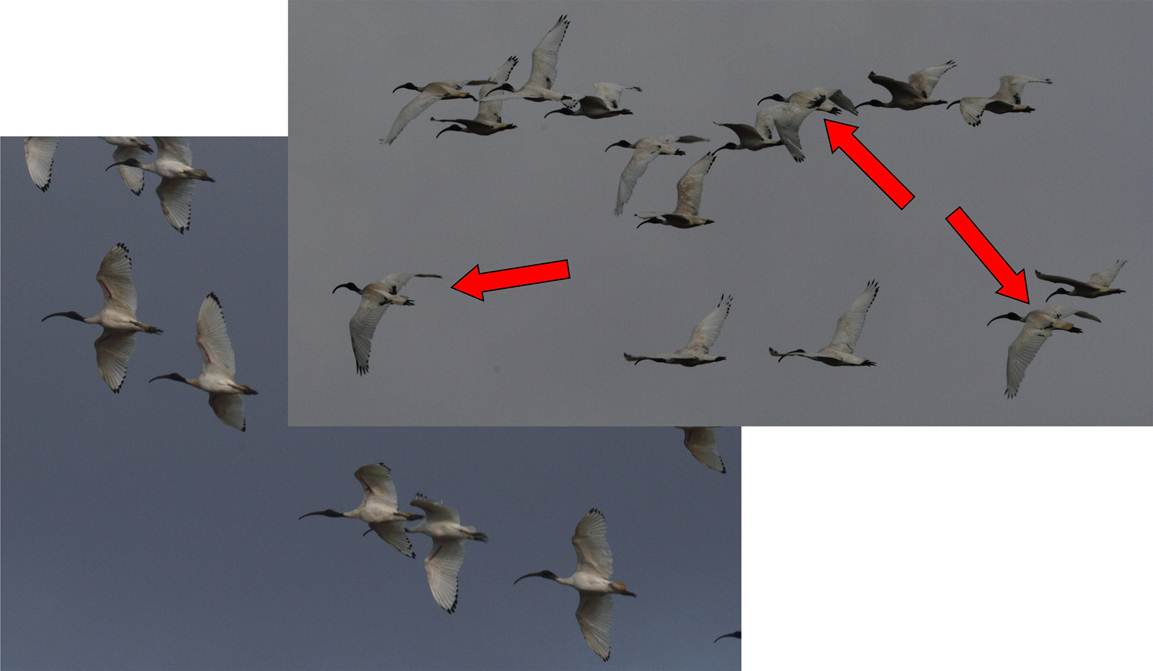|
Good
photos and ideas. I can add that it is of course the layering of the feathers
that can create the difference of appearance of upper and lower surface. In all
flying birds, the upper surface shows more of the outer web of the main wing
feathers, whereas the lower surface shows more of the inner web of these
feathers. So a bird that has dark outer web of each secondary feather and light
inner web may appear to have very dark upper wings and very pale under wings The
same principle is obvious in the speculum colour patch on the wings of ducks for
example and lots of raptors show that feature.
In the
case of the white ibis, the black patch is
filamentous against mostly white. That can be seen on individual feathers but
varies. Sure the layering is the main part of the story between upper and lower
views but there are other reasons. It is much more obvious when the wing is
closed, mainly because all those wispy black bits are bunched up together, so
look fairly solid black, whereas on the spread wing, these bits are spread out
and not so easy to see. Sort of like taking off a fish net stocking........ Also
in most poses seen on a flying bird from below, (because the wing is on the
upper, not lower, side of a bird's body) the inner edge of the wing is generally
hidden behind the curve of the bird's body, with the inner one or two secondary
feathers lying over the lower back to eliminate gaps in the airfoil between the
wings. Whereas viewed from above, the inner secondary feathers are usually
visible, as they are not hidden behind the bird's body. Geoffrey's photos show
this.
Philip
On the matter of the visibility of those partially black
secondaries on white ibis in flight, I found the below confirming that the
black is not visible from below, but is from above, extent varying on individual
birds

|

